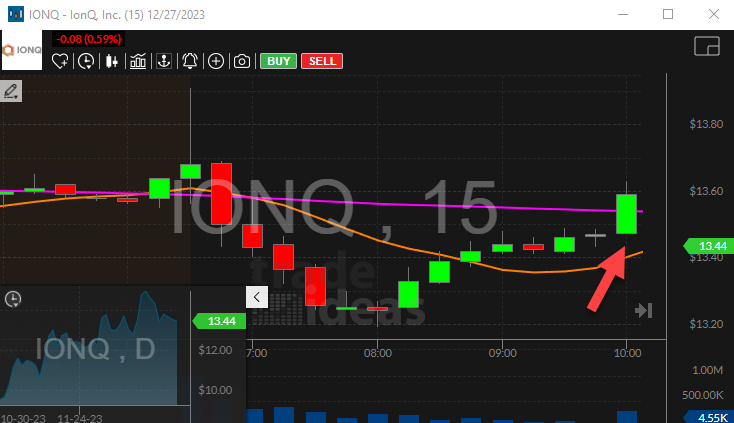Crossed Above 20 Day Moving Average
Table of Contents
Understanding the Crossed Above 20 Day Moving Average Alert
Simple Moving Average (SMA) is a commonly used technical indicator that helps smooth out price data to identify trends over a specified period of time. The SMA is calculated by taking the average price of a security over a set number of periods, dividing the sum by the number of periods .The 20-period moving average (20MA) is a commonly used technical indicator in trading, offering several benefits for traders and investors:
Trend Identification: The 20MA helps identify trends in a stock or market. If the current price is consistently above the 20MA, it may indicate an uptrend, while a price consistently below the 20MA may suggest a downtrend.
Smoothing Price Data: The 20MA smoothens price data, reducing short-term noise and making it easier to discern the underlying trend. This can be particularly useful for traders who want to focus on medium-term trends rather than longer-term trends highlighted by a 50MA.
Dynamic Support and Resistance: Like other moving averages, the 20MA can act as dynamic support or resistance levels. Traders often observe how prices interact with the 20MA, using it as a reference point for potential entry or exit points.
Shorter-Term Trend Confirmation: The 20MA is considered a shorter-term moving average compared to the 50MA. It provides traders with more responsive signals to changes in price trends, making it suitable for those looking to capture shorter-term price movements.
Crossovers as Signals: Crosses of the price over or under the 20MA can be used as signals for potential trend changes. For example, a price crossing above the 20MA might be considered a bullish signal, suggesting potential upward momentum.
Volatility Measurement: The 20MA can also be used to gauge market volatility. Wide separations between the price and the 20MA may indicate increased volatility, while tight ranges could suggest lower volatility.
Swing Trading: Traders engaged in swing trading, where positions are held for a few days to weeks, often find the 20MA particularly useful. It provides a balance between capturing shorter-term trends and filtering out noise.
The alert listed here requires statistical confirmation before it appears. This filters out noise, but requires a slight delay. This analysis involves price, time, and volume. If the price continues to move around the 20 day moving average, this alert may never appear. Once the price chooses a direction the exact amount of time required for the alert to appear depends on volume. The statistical analysis does not require that every print cross the 20 day moving average before the alert is displayed. The analysis filters out insignificant prints that go against the general trend. It is even possible, although unlikely, that the last print disagrees with the analysis as a whole.
Default Settings
By default, the Crossed Above 20 Day Moving Average alert appears when the price of a stock crosses above its 20 day moving average with sufficient volume.


Description Column
The description column will report at which price the stock crossed its moving average.

Alert Info for Crossed Above 20 Day Moving Average [CA20]
- description = Crossed above 20 day moving average
- direction = +
- keywords = Moving Average Volume Confirmed
- flip_code =
 Crossed below 20 day moving average [CB20]
Crossed below 20 day moving average [CB20] - parent_code = CA200